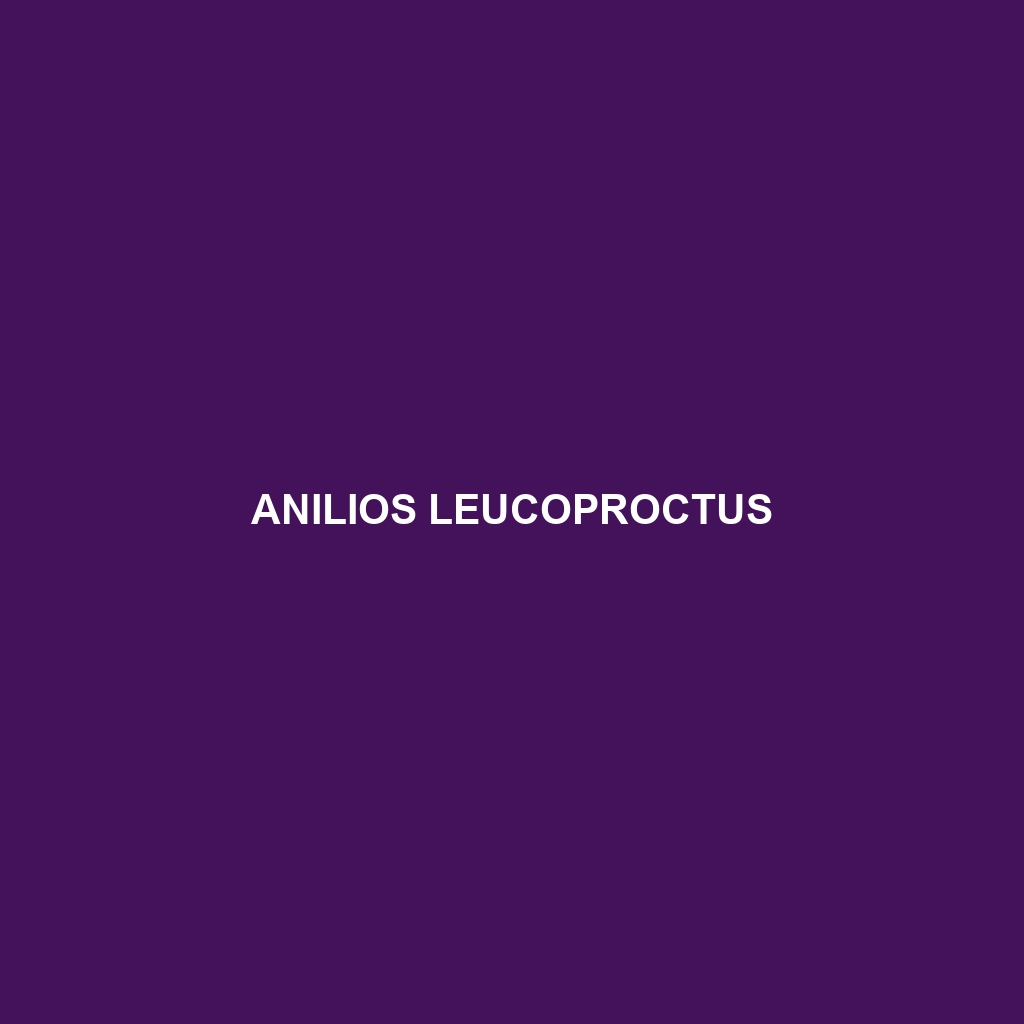-

Anilios minimus
Discover the Anilios minimus, or pygmy blind snake, a small, fossorial species native to Australia, typically measuring 20-30 cm and exhibiting a brown or gray coloration. Adapted for a burrowing lifestyle, this nearly blind snake feeds on invertebrates and plays a crucial role in maintaining soil health within its moist forest and grassland habitats.
-

Anilios leucoproctus
Discover the elusive Anilios leucoproctus, or white-bottomed blind snake, a slender fossorial species native to the tropical habitats of Australia and New Guinea, measuring 30-50 cm in length with a smooth, dark brown to reddish-brown body and distinctive pale underbelly. This carnivorous snake plays a crucial ecological role by preying on soft-bodied invertebrates while contributing…
-

Anilios howi
Discover the How’s blind snake (Anilios howi), a small, slender reptile found in the tropical woodlands of northern Australia, known for its unique burrowing adaptations and nocturnal feeding on invertebrates. With its smooth scales and cryptic behavior, this secretive species plays a vital role in maintaining ecological balance in its habitat.
-

Anilios insperatus
Anilios insperatus, commonly known as the Northern Blind Snake, is a medium-sized, fossorial snake native to northern Australia, thriving in tropical and subtropical wet forests. Characterized by its dark brown to tan coloration with lighter bands, it primarily feeds on small invertebrates and plays a vital role in regulating soil-dwelling animal populations while being categorized…
-

Anilios kimberleyensis
Discover the Anilios kimberleyensis, or Kimberley Blind Snake, a fossorial species native to the arid regions of Western Australia, recognized for its elongated, smooth body and diet primarily consisting of termites. This non-aggressive snake plays a vital role in its ecosystem by controlling termite populations and contributing to soil health.
-

Anilios leptosoma
Discover the Anilios leptosoma, commonly known as the slender blind snake, a nocturnal predator inhabiting the tropical rainforests of northern Australia. This unique species, measuring 60 to 80 centimeters long, is recognized for its elongated body, smooth scales, and diet rich in soft-bodied invertebrates, while playing a crucial role in maintaining ecological balance.
-

Anilios guentheri
Discover the fascinating Anilios guentheri, or Guenther’s Blind Snake, a nocturnal species native to northeastern Australia, known for its glossy dark brown to black body and burrowing lifestyle. This unique snake primarily feeds on soft-bodied invertebrates and plays a crucial role in its ecosystem by regulating prey populations and contributing to soil health.
-

Anilios fossor
Discover the fossorial blind snake, Anilios fossor, a 40 to 55 cm long species native to eastern Australia, thriving in moist forests and sandy soils. This elusive creature, often mistaken for other snakes, plays a crucial role in controlling invertebrate populations and maintaining healthy ecosystems.
Search
Popular Posts
-
Gerrhopilus oligolepis
Discover the Gerrhopilus oligolepis, a nocturnal insectivore native to tropical and subtropical regions, known for its slender body, distinctive dorsal spots, and remarkable camouflage. This species plays a crucial role in its ecosystem by regulating insect populations and serves as an important food source for larger predators.
-
Gerrhopilus mirus
Gerrhopilus mirus, or the remarkable snake, is a small, nocturnal insectivore primarily found in the tropical rainforests of Southeast Asia. With its distinctive brown and yellow coloration, this adaptable species plays a crucial role in controlling insect populations and maintains a vital ecological balance within its habitat.
-
Gerrhopilus mcdowelli
Common Name Gerrhopilus mcdowelli Scientific Name Gerrhopilus mcdowelli Habitat Gerrhopilus mcdowelli is primarily found in the lush, humid environments of tropical rainforests, particularly within the regions of Southeast Asia. These serpentine creatures thrive in dense foliage near streams and rivers, enjoying moist conditions that support their biological needs. Their habitat preference also extends to nearby…
Categories
Tags
animal adaptations (790) animal behavior (4790) animal reproduction (803) behavior (919) biodiversity (7114) conservation (1670) conservation efforts (1535) conservation status (4944) diet (2099) echolocation (822) ecological balance (1622) ecological role (1495) ecology (791) ecosystem (1468) ecosystem role (2695) ecosystem roles (695) endangered species (2423) environmental conservation (716) habitat (3249) habitat conservation (957) Habitat Destruction (1079) habitat loss (3048) insectivorous reptiles (740) IUCN Red List (1521) lizard reproduction (696) nocturnal animals (2708) nocturnal behavior (2315) nocturnal reptiles (681) physical characteristics (1998) reproduction (2858) reptile conservation (1001) rodent (677) rodent species (1325) seed dispersal (2078) Seed Disperser (962) small mammals (1164) snake diet (723) snake reproduction (773) South America (791) species description (714) tropical forests (938) Vulnerable Species (4534) wildlife (2507) wildlife conservation (4699) wildlife protection (881)





